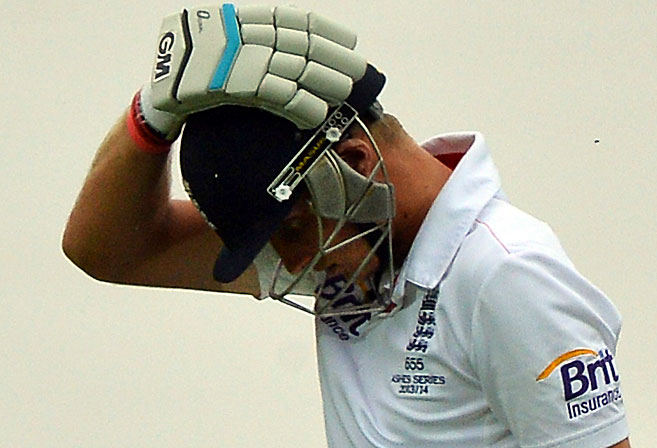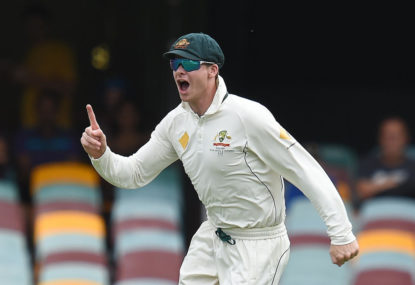In any cricket team, from the Australian national side, to the Lindfield U/8 Cs, the best batsman has to be your captain.
They are the rock of the side. The person the batting order can be built around, and that individual who, when they walk to the crease, makes all around them breathe a calm sigh of relief.
Currently the four best Test batsmen in the world happen to be the four captains of their respective national outfits. Steve Smith (Australia), Joe Root (England), Virat Kohli (India) and Kane Williamson (New Zealand)
The fact of the matter is, these four names have dominated batting charts, and indeed conversation, in world cricket for the past two or three years. So dominant have they been in fact, that if you quickly searched the ICC batting rankings, they take up 80 per cent of the top five positions; the only anomaly being Indian captain Virat Kohli who just sits fifth after a shocking Test series against Australia.
After Joe Root’s sparkling 190 against a fired up Proteas attack last week, his first Test as England’s Test captain, we can now try and go some way to settling the debate that has dominated armchairs worldwide for far too long. Who is the best of this awesome foursome?

(AFP Photo / Saeed Khan)
I was terrible at maths at school, but I figure this question can’t be answered, nor will my assertions be taken seriously, without a solid foundation of evidence; some numbers and quantifiable data to support the statements that follow.
With that in mind, I burrowed away in my bedroom last night, and formulated this table of what I felt were the key statistics and measures of each individuals influence, both on their team, and the run-scoring table. Of course, this is not completely holistic, and I’d be interested to hear other opinions on what should and shouldn’t be taken into account when trying to answer this question.
|
ICC Ranking |
Hundred percentage |
Conversion rate |
Average in second innings winning and losing causes |
Average |
Average away from home |
Total score |
| J Root |
848 (3) |
12% (4) |
31% (4) |
39.19 (4) |
53.80 (2) |
52.70 (2) |
19 (4) |
| S Smith |
941 (1) |
20% (1) |
50% (2) |
39.95 (3) |
61.05 (1) |
70.22 (1) |
9 (1) |
| V Kohli |
818 (4) |
16.5% (2) |
53% (1) |
44.27 (2) |
49.41 (4) |
43.41 (4) |
17 (3) |
| K Williamson |
880 (2) |
15.5% (3) |
40% (3) |
55.50 (1) |
51.16 (3) |
51.99 (3) |
15 (2) |
Key: 1 = First in category, 4 = Fourth in category
So… Let’s unpack this table and make sense of what it all means.
ICC ranking
The ICC Test ranking works by allocating an overall, ever changing ‘score’ out of 1000 to every single batsmen who has ever completed an innings in a Test match. Therefore, it is a useful indicator of current form.
It is a complicated, but completely objective, algorithm that combines a number of far-reaching factors; from runs scored, to whether or not they finished not out. It also assesses the quality of the bowling attack the batsman is facing, and whether or not their team won the match.
As it currently stands, Steve Smith sits comfortably clear at the top of the pile on 941 points. To contextualise the significance of this figure, only four batsmen in the history of the game have sat on a higher total.
You may have heard of them – Sir Donald Bradman, Sir Len Hutton, Sir Jack Hobbs and Ricky Ponting. Hobbs and Ponting’s highest scores were 942, one ahead of Smith. It is entirely feasible that come Australia’s next Test series against Bangladesh (assuming it goes ahead), that Smith could move up to third on that all time list.
The battle for the podium spots are a tighter tussle. Currently, the Black Caps skipper, Williamson, sits second on 880 points, while Root breathes down his neck on 848. Kohli sits fifth, largely owing to his horror series against Australia where he averaged under ten before sitting out the fourth and deciding Test with injury.
Winner: Steve Smith
Hundred percentage
This statistic merely took the number of hundreds scored by each batsmen as a percentage of the number of innings they’ve played in Test cricket. Again, the Australian captain came up trumps, scoring a century once every five times he walks to the crease.
Take into account he began his career as a tail-order leg spinner who didn’t register his first Test hundred until his 23rd Test innings; and this statistic is even more significant.
Kohli just edges Williamson into second position, his 16.5 per cent hundred rate being one of the best in Test cricket. He registered his first hundred against Australia in his twelfth test innings.
Williamson is the evergreen centurion of the group, scoring his first ton in his first Test; against India in India. His most recent test innings? A flawless 176 against a very strong South African bowling outfit. His 15.5 per cent century percentage is outstanding. Root sits some way behind his compatriots in this category, but still pulling his weight with a score of 12 per cent.
Winner: Steve Smith
Conversion rate
This statistic is vital in measuring who of these batsmen, if they get to 50 will go on to make a hundred. You’ll want to nab Indian skipper Virat Kohli early in his innings, as he converts his starts 53 per cent of the time.
Smith comes in second, converting fifties into hundreds exactly 50 per cent of the time he makes it to that first milestone; while Williamson and Root are some way back, on 40, and 31 per cent, respectively.
Winner: Virat Kohli
Average in second innings
It is fantastic to score big hundreds in the first innings of Test matches to set your side up for the inevitable fourth and fifth day push for victory. However, arguably more important is a batsman’s ability to grind out totals in their teams second innings. Be it chasing down mammoth scores, or defending resolutely for a handful of sessions to force a draw – it is a vital statistic in the context of this debate.
Williamson was our clear winner here. His 55.50 average in New Zealand’s second innings is nothing short of phenomenal, and is perhaps the most telling stat on his influence on his national outfit.
Kohli came in second, averaging a tick over 44 – while Smith and Root would be disappointed (by their own lofty standards) to average a shade under 40 in the third and fourth innings of Test matches.
Winner: Kane Williamson

(AP Photo/Tertius Pickard)
Average away from home
We hear the term ‘flat track bully’ get thrown around a lot in Australia to describe batsmen who can perform admirably in their home conditions, but not so well overseas. Players like David Warner fall into this category.
The mark of an outstanding batsman is their adaptability, and ability to thrive in all conditions. From the flat, bouncy wickets of the WACA and the Gabba, to the turning dustbowls of Dharamsala at the foot of the Himalayas – those who score prolifically in all conditions inevitably have an advantage in this debate.
Steve Smith trumps any and all in this category. His average of 56 in Australia is world class. His average overseas of 70.22? Extraordinary.
Perhaps most impressively, Smith averages 60.00 in India, a place where tourists notoriously struggle. His output of 41 against Sri Lanka in Sri Lanka is his lowest away from home.
Root comes in second to Smith, averaging 53.80 away from the seaming green tops of his home tracks. The Southern Hemisphere is an unhappy hunting ground for the English skipper, however. He averages 27 in Australia, and a mere 17 in New Zealand.
Williamson is next, clocking an impressive 51.99 output away from home. The black mark on his cricketing passport being South Africa, where he averages only 21. He clearly prefers short plane trips, as he has been dominant in his trips to the Great Southern Land.
Rounding out the group is Virat Kohli with 43.41. The Indian skipper averages 13.4 in England and only in the 30s in the West Indies and South Africa. I know that India play the lion’s share of their Test match cricket at home, but these numbers are a little low for a player of Virat Kohli’s calibre.
Winner: Steve Smith
Overall average
Not much needs to be said about this category. It is the most universally used indicator of a batsman’s output, and it considers total runs scored divided by number of innings played. Smith’s average of 61.05 is scarcely believable, while Root, Williamson and Kohli round out the group (in that order).
Winner: Steve Smith

(AAP Image/Dave Hunt)
The final results…
All things considered, and using the point calculations prescribed in the table above, as it currently stands, in my opinion, these are the best Test batsmen in the world.
In order:
1st – Steven Smith
2nd – Kane Williamson
3rd – Joe Root
4th – Virat Kohli
I look forward to reading healthy banter and all of your thoughts below.
































































































